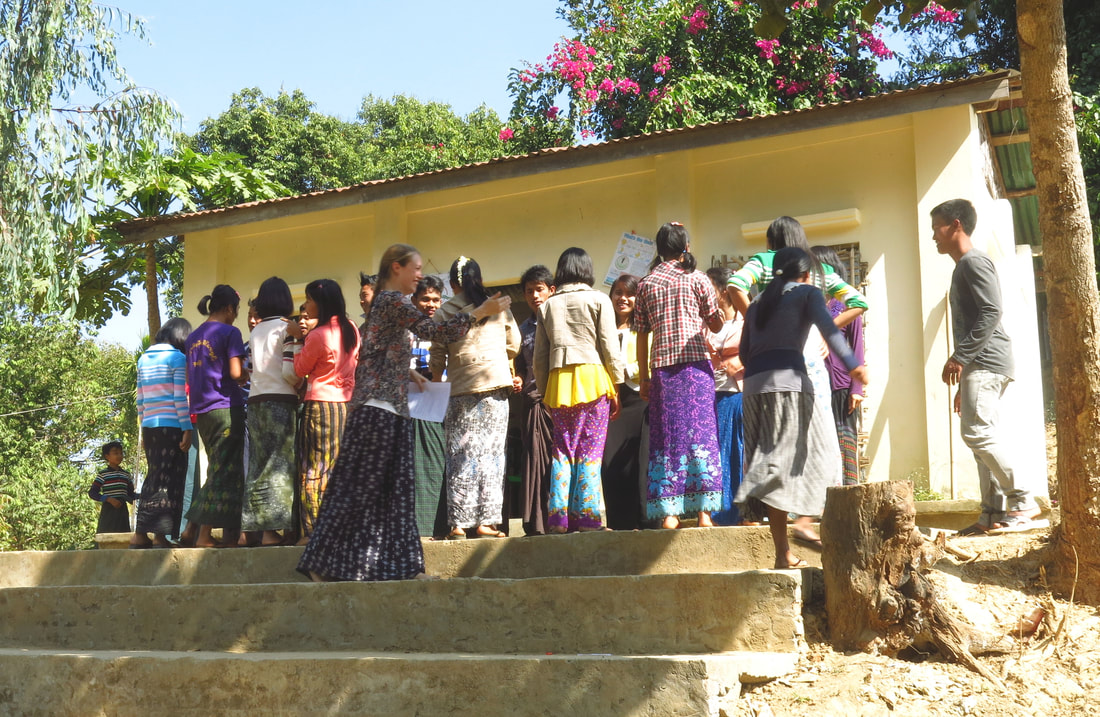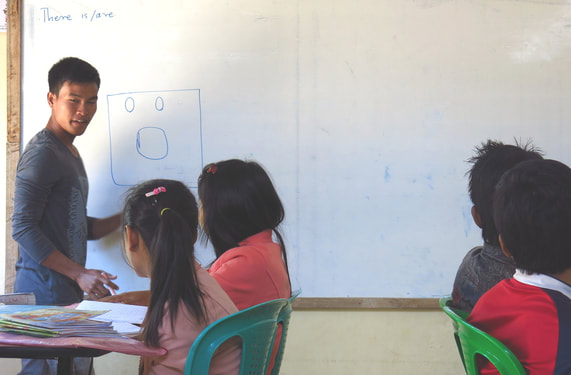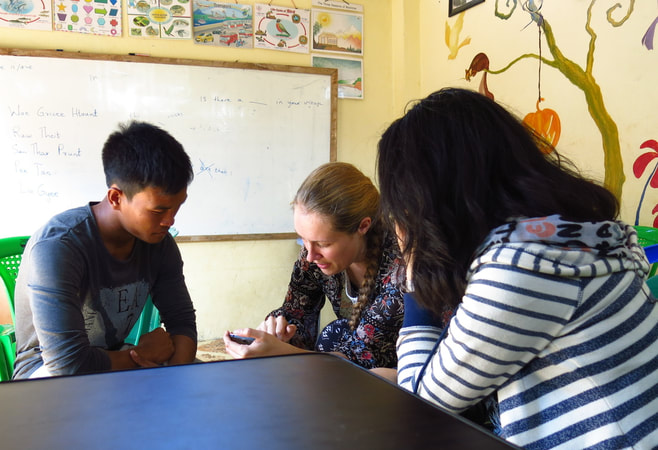|
I had already had the pleasure, or worry, of watching this class. This time however, we were rolling out the NEH curriculum. I had planned it based on what I know of Rakhine, and R.E.C especially. I am pleased with the syllabus, but it was evident to me that it would need tweaking as we went. Any curriculum needs changing and altering as you go, but this is a brand-new never before taught curriculum; therefore it needs special care, consideration and monitoring if it is to be a success. I have never planned a complete curriculum from scratch for someone else to teach before, so we are into new territory. As Van and I settled into our seats in the least obtrusive location that we could find, the young teacher asked ‘Is there anything to do in your village?’ to his friend who was sitting at the front of the classroom. This was met with blank incomprehension, as the teacher tried ‘how many things are there in your house?’ The problem was that the engage part of the lesson which activates the schemata had been skipped and the poor pupils didn’t understand the question, nor did they have any context from which to extrapolate. Over the weekend, a new toilet had been constructed in the back yard. We had two toilets; the old and the new. All of the volunteer teachers knew about this as many of them had helped build the new one! After a shaky start, the trainee drew an image of his house with two toilets accompanied by the sentence ‘in my house there are two toilets.’ This is such an unusual sentence that it immediately captured the attention of the students and engaged them into the lesson. In our feedback later that day, I advised that he should have started off with the attention grabbing toilet anecdote. When any new language is introduced, it is essential for the teacher to model that language. Of course, this is harder in your second tongue, but by no means an impossible feat. Modeling means only using the target language that you have pre-decided upon prior to the class. This is why planning is so crucial. Naturally, most people would not always use the same language as repetition is boring. Unless you happen to be running an ESL classroom. Half way through the lesson, our trainee was looking fraught as he gave the students a 10 minute break. In a quick half-time coaching session, it was decided that I should take over and re-do the lesson from the beginning as it was intended. I quickly gathered an armful of leaves, straw, coconut husks and other village paraphernalia for the engage modeling section of the remaining hour of class. As I instructed, monitored and facilitated some wonderful language learning I felt a sense of calm. This was how ESL teaching was supposed to be. The students had been enthralled by my outside realia and were now using my throughly thought-out scaffolding to climb to freedom and create their own role-plays. Monitoring is crucial to the success of students, and our protege had a bad habit of getting far too close to the students and becoming ‘one of the gang.’ In this way, he was ignoring the other students by body blocking them out of the discussion with any given table. I move quickly from table to table with a slight incline of my head unless a student asks a specific question, and even then I will stand to the side making sure that the rest of the class is still visible to me. At the end of the class, Van and our trainee gathered around a table with me to feedback on the two halves of the lesson; I was very pleased with the observations that the teacher made about my teaching of the lesson and he exclaimed that he could now see the benefit of engaging the students and going logically through each stage. I will admit that the lesson was as close to magic as any I’ve taught. The students changed from being fidgety and distracted under his tutorage to rapt and motivated by my spell. It went as well as I could have hoped and had a huge impact on the way that the local teacher saw the planning and teaching process.
By following my plan, my lesson was a success in a way that his simply was not. I have said it before; leading by example really is the best way to instruct the teachers here. They are so unaccustomed to this way of teaching and learning that they simply can’t fathom how to construct and run a lesson even when the planning is done for them. Additionally, as our young teacher mentioned, the lessons do not ‘feel’ like him yet because I planned them and they are in my style of teaching. I hope that soon we can progress to planning together before he eventually takes over and is fully in control of his own lessons. Then he can take over my role as teacher trainer and I will be superfluous to the daily running of the classroom! Chloe Smith NEH Coordinator and Teacher Trainer Related Posts: Arriving in Kyauk Phyu, Rakhine State Arriving on an Island Meeting with Locals First Day of Class Daily Bus Journeys to Work
Comments
|
This section will not be visible in live published website. Below are your current settings: Current Number Of Columns are = 3 Expand Posts Area = 1 Gap/Space Between Posts = 20px Blog Post Style = card Use of custom card colors instead of default colors = Blog Post Card Background Color = current color Blog Post Card Shadow Color = current color Blog Post Card Border Color = current color Publish the website and visit your blog page to see the results |
|
© New Education Highway 2024
Except where otherwise noted, content on this site is licensed under a Creative Commons Attribution 4.0 International License. |




